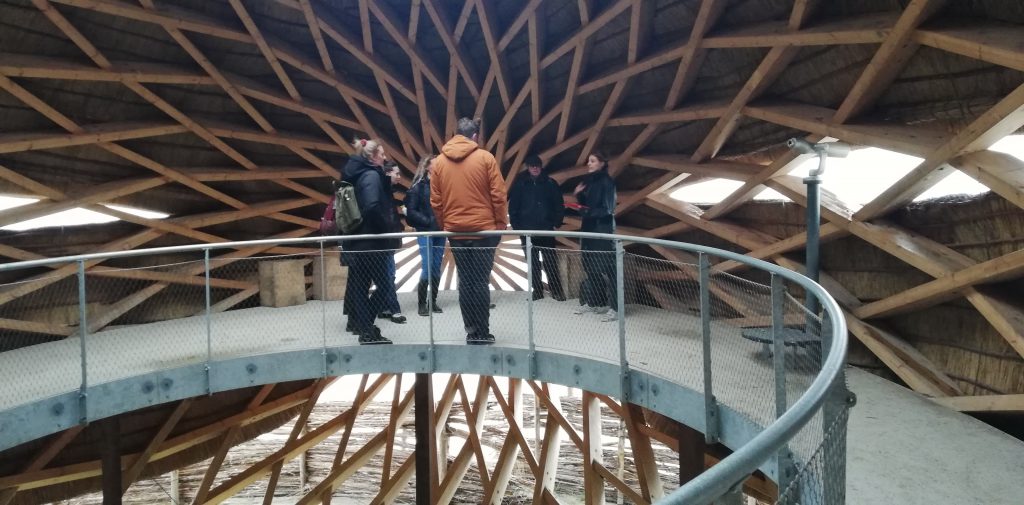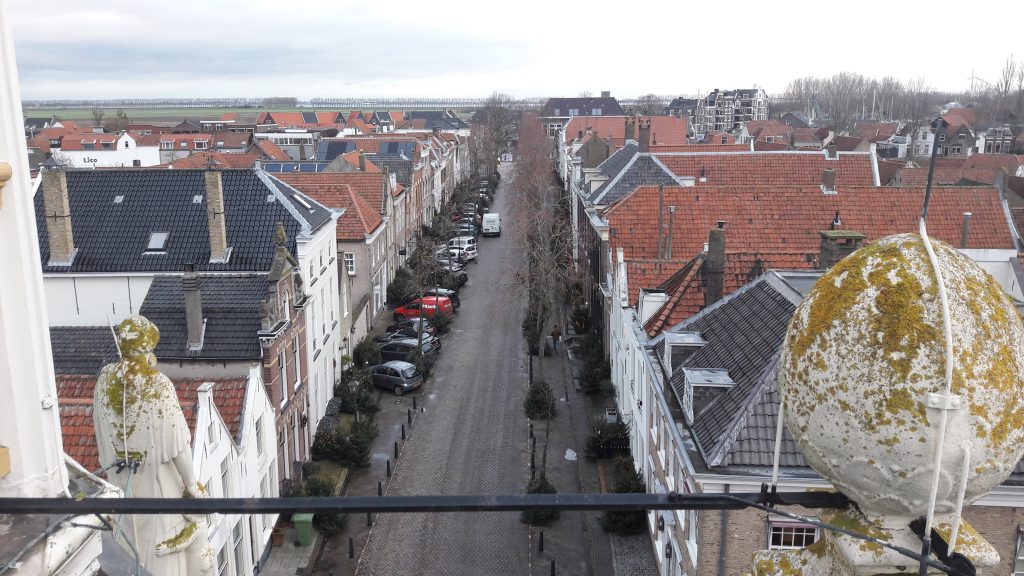Written by Bo Jonk
On the 20th of December, the annual field excursion of the course Politics of International Heritage took place. This course focuses on the relation between heritage and climate change. All students researched a case study on Goeree-Overflakkee in the South of the Netherlands. The municipality of Goeree-Overflakkee aims to be as prepared as can be for the expected increasing effects of climate change. Subsequently, they investigated what areas are at most risk of being affected. The students took on case studies derived from this investigation. Not entirely unlikely, the field trip was planned to this area. The excursion started early when we drove the minivan from Amsterdam to Goeree-Overflakkee. The students were accompanied by professors Hans Renes and Linde Egberts and former student, now member of the municipal heritage department of Goeree-Overflakkee, Mathijs Witte.
Every student prepared a presentation about their case study that he or she was to present on location. The first presentation took place inside the bird observatory Tij at the Scheelhoek, alongside the Haringvliet. Partly opening the Haringvliet sluices, flooding in Middelharnis, Stad aan ‘t Haringvliet off the gas pipe and re-using the old scours basins were amongst the topics of presentations held on location.

My presentation concerned how historic landscapes and systems of watermanagement can be adapted to cope with internal salinization as result of climate change, with focus on two specific villages: Herkingen and Melissant. The research aims to form an advice on how internal salinization can be dealt with in the future, by providing adapting strategies. The perspective that internal salinization is not necessarily problematic but can bring new possibilities to heritage management is central in the research. I had made the decision to present my research in Herkingen at the Paardengat, one of the creeks in the area. In my research, the Paardengat serves as exemplary of how heritage can be adapted to climate change. Being able to see the functioning of this creek and experience the environment in real life instead of merely through a computer screen was eye opening. Being in the field makes it possible to relate theory to practice and gain a better spatial understanding, which is a crucial part of this research. Furthermore, it helped me to formulate new ideas and perspectives which come in handy in completing the research.

Besides the presentations, there was time to explore some of the remarkable hotspots in the area and get a feeling of the life on Goeree-Overflakkee. We were able to taste the ‘Goereese bolus’, a real delicacy. Furthermore, we visited the solar park in Melissant and the former town hall in Middelharnis, where we got the chance to see the old city centre from the roof. In Battenoord we even got to see climate change in action when we observed wild flamingos. Our day ended in Stad aan ‘t Haringvliet where we received a warm welcome and some apple pie from one of the residents, before heading back to Amsterdam again.
